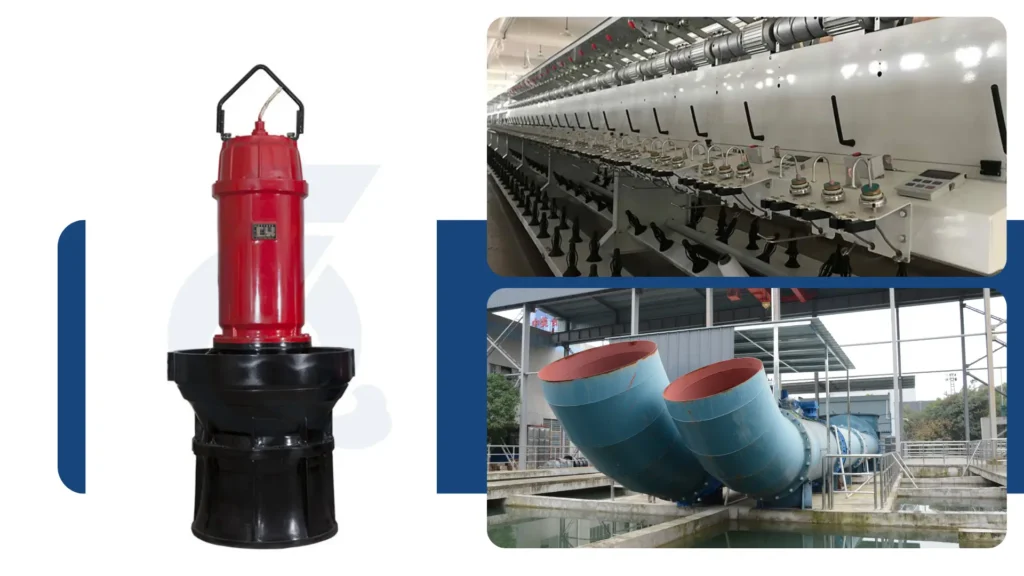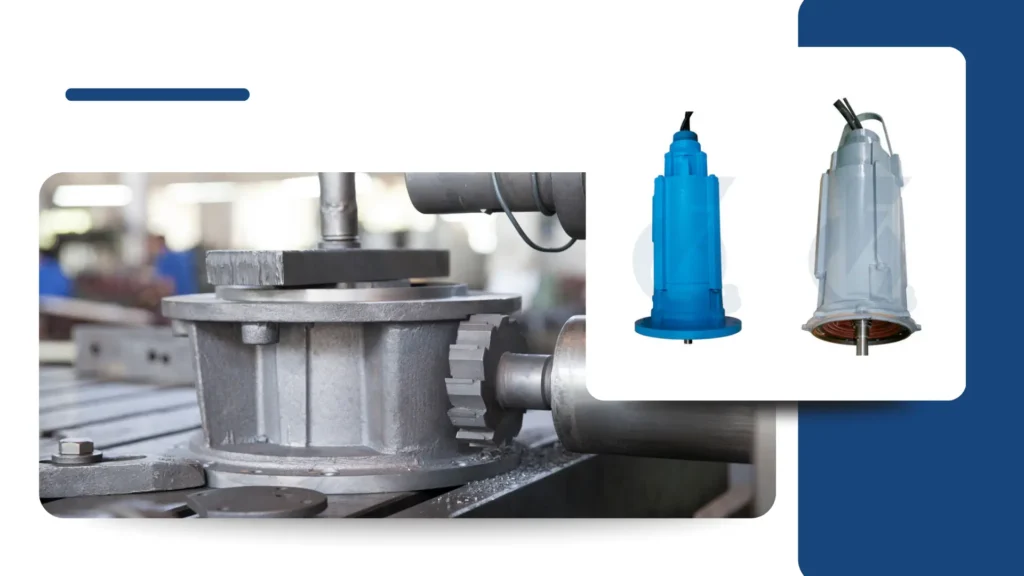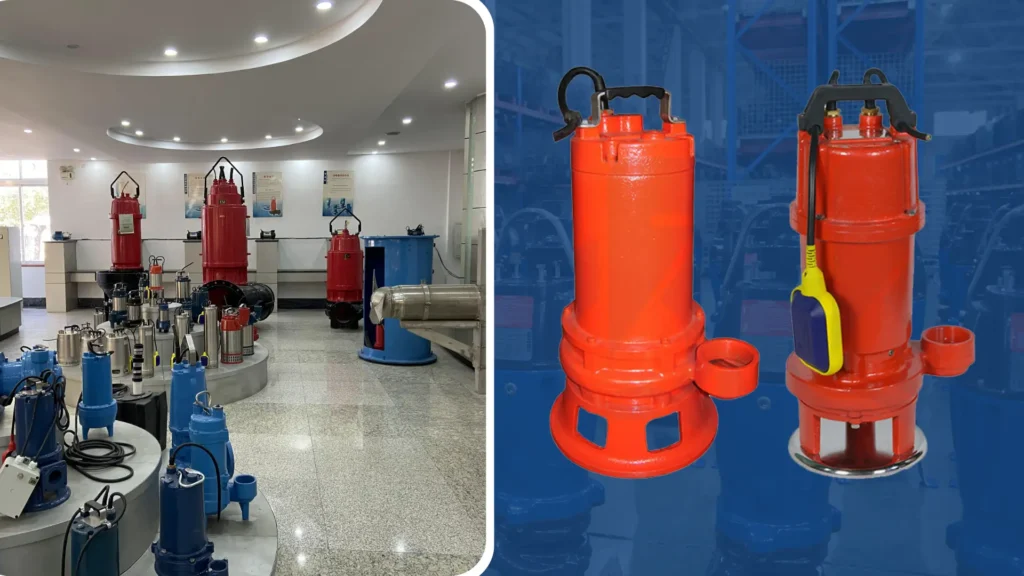Mining operations are complex and demanding, requiring robust and efficient equipment to handle various challenges, from extreme underground conditions to large-scale material processing.
Submersible pumps have emerged as indispensable assets in the mining industry, playing a crucial role in tasks such as dewatering mineshafts, handling process water, and transporting slurries, where their unique design addresses many of the sector’s most pressing operational hurdles.
This article will explore how submersible pumps contribute to efficiency and reliability in mining operations, providing valuable insights for potential buyers looking to invest in mining equipment, whether for small-scale operations or large industrial mines.
Why Are Submersible Pumps Ideal for Mining Operations?
Adaptability to Harsh Environments
Mining environments are characterized by extreme conditions, including high temperatures, abrasive fluids, and high pressure, often combined with exposure to corrosive minerals and chemicals.
Submersible pumps are built with durable materials and robust designs to withstand these harsh factors, such as reinforced casings and heat-resistant motors that prevent breakdowns in extreme heat.
Their corrosion-resistant casings and wear-resistant components ensure they can operate effectively in the presence of mineral-laden waters and chemicals commonly found in mines, maintaining performance even after prolonged exposure to aggressive substances.

High-Volume Pumping Capacity
Mining often involves the handling of large volumes of water and slurries, from sudden influxes in underground shafts to continuous flows in processing plants.
Submersible pumps are engineered to deliver high-flow rates, with some models capable of moving thousands of liters per minute, making them capable of quickly dewatering mineshafts and processing areas.
Their ability to move substantial amounts of fluid in a short time helps maintain safe working conditions by preventing waterlogging and keeps mining operations on schedule, avoiding costly delays caused by fluid accumulation.
Submersible Design Advantages
The submersible nature of these pumps allows them to be placed directly in the fluid source, eliminating the need for complex above-ground installations that can clutter tight mining spaces or be vulnerable to damage.
In mines, where space is limited and the layout can be intricate—with tunnels, shafts, and machinery packed closely together—this design simplifies the pumping system setup, reducing installation time and labor costs.
It also reduces the risk of air entrainment and priming issues that can occur with traditional above-ground pumps, ensuring consistent performance even in fluctuating fluid levels.
And More:
- 7 Key Benefits of Submersible Pumps in Water Management
- Application and Advantages of Different Materials in Submersible Pumps
How Do Submersible Pumps Enhance Dewatering Efficiency in Mines?
Rapid Water Removal
Effective dewatering is essential for maintaining safe and productive mining operations, as excess water can compromise structural integrity and halt work.
Submersible pumps can rapidly remove water from flooded mineshafts, stopes, and other underground areas, thanks to their powerful motors and optimized impeller designs that minimize hydraulic losses.
Their high-power motors and efficient impellers enable quick water extraction, reducing the downtime caused by water accumulation and allowing miners to resume work promptly, even after heavy rainfall or unexpected water ingress.
Continuous Operation Capability
Submersible pumps are designed for continuous operation, which is crucial during dewatering tasks that may need to run around the clock to prevent water levels from rising.
They feature robust cooling systems—often utilizing the surrounding fluid to dissipate heat—and reinforced components that can withstand long-term use without overheating or experiencing premature wear.
This continuous operation helps keep mine levels dry and stable, minimizing the risk of cave-ins and other water-related hazards that could endanger workers or damage equipment.

Energy-Efficient Dewatering
Modern submersible pumps incorporate energy-saving features to optimize dewatering efficiency while reducing operational costs, a key consideration for mines with high electricity usage.
Variable frequency drives (VFDs) can adjust the pump’s speed according to the water level, reducing energy consumption during periods of low demand by avoiding unnecessary high-speed operation.
Additionally, advanced hydraulic designs minimize energy losses through streamlined flow paths, making the pumps more cost-effective for long-term dewatering operations in mines, where energy bills can account for a significant portion of operational expenses.
What Makes Submersible Pumps Reliable for Handling Mining Slurries?
Abrasion Resistance
Mining slurries contain a mixture of water, minerals, and rock fragments, which can be highly abrasive and destructive to standard pump components over time.
Submersible pumps used for slurry handling are constructed with wear-resistant materials such as high-chrome alloys for impellers and casings, which offer exceptional hardness and resistance to erosion.
These materials can withstand the constant erosion from the abrasive particles in the slurry, extending the pump’s lifespan and reducing the frequency of component replacements, which would otherwise disrupt operations.
Solid-Handling Capability
These pumps are designed to handle solids of various sizes without clogging, a critical feature in mining where slurries often contain large rock fragments or debris.
Their open-vane or channel-impeller designs create larger passageways that allow the smooth passage of large particles, preventing blockages that could halt pumping and require time-consuming cleaning.
Whether it’s transporting tailings from a processing plant or moving ore-bearing slurries, submersible pumps can handle the task with reliability, ensuring uninterrupted material flow.
Sealing Technology
To prevent leakage of slurry and protect the pump’s internal components—particularly the motor—submersible pumps feature advanced sealing technology that creates a barrier against abrasive fluids.
Double-mechanical seals or other specialized sealing arrangements, often with lubricated chambers, keep the slurry from entering the motor and bearing compartments, where it could cause corrosion or mechanical failure.
This not only ensures the pump’s reliable operation but also reduces the risk of environmental contamination from leaked slurry, which may contain harmful chemicals or heavy metals.
Also Read:
How to Ensure Compliance with Industry Standards for Submersible Pumps

How Do Submersible Pumps Contribute to Process Water Management in Mines?
Consistent Water Supply
Process water is used in various mining operations, including mineral processing, dust suppression to protect worker health, and cooling of machinery like crushers and drills.
Submersible pumps can provide a consistent and reliable supply of process water, even in remote or hard-to-reach areas of the mine.
They can draw water from storage ponds, wells, or other sources and deliver it to different parts of the mine at the required pressure and flow rate, ensuring smooth operation of mining processes that depend on a steady water supply.
Water Recycling and Treatment
In an effort to conserve water and reduce environmental impact—especially in arid regions where water is scarce—many mines implement water-recycling programs that treat and reuse wastewater.
Submersible pumps play a key role in these initiatives by pumping water from treatment plants back to the areas where it can be reused, such as for dust suppression or as makeup water in processing.
Their ability to handle treated water with varying chemical compositions, including low levels of contaminants, makes them suitable for this task, helping mines meet their sustainability goals and regulatory requirements.
Pressure and Flow Regulation
For different mining processes, precise control of water pressure and flow is necessary to ensure efficiency and effectiveness.
Submersible pumps can be equipped with control systems that allow operators to adjust the pump’s output as needed, often remotely via SCADA systems.
Whether it’s increasing the water flow for enhanced dust suppression or maintaining a specific pressure for efficient mineral processing, these pumps offer the flexibility to meet diverse process water management requirements.
What Are the Maintenance Considerations for Submersible Pumps in Mines?
Regular Inspection Schedules
To ensure the continued efficiency and reliability of submersible pumps, regular inspections are essential, as early detection of issues can prevent costly breakdowns.
Miners should follow a set schedule—often weekly or monthly, depending on usage—to check for signs of wear, leaks, and other potential issues, such as unusual vibrations that may indicate misalignment or bearing wear.
Inspections can include checking the pump’s electrical connections for corrosion, monitoring vibration levels with sensors, and inspecting the condition of impellers and seals for cracks or erosion.

Spare Parts Availability
Having a readily available supply of spare parts is crucial for minimizing downtime in case of pump failures, as even a few hours of inactivity can cost mines thousands in lost production.
Common spare parts for submersible pumps in mining, such as seals, bearings, and impellers, should be stocked on-site or sourced from reliable suppliers with fast delivery times.
This ensures that any damaged components can be quickly replaced, getting the pump back in operation as soon as possible and reducing the impact on mining schedules.
Professional Maintenance Services
While some routine maintenance tasks—like cleaning intake screens or checking electrical connections—can be performed by in-house mine maintenance teams, more complex repairs and overhauls may require professional expertise.
Many submersible pump manufacturers offer maintenance services or can recommend qualified service providers with experience in mining applications.
Engaging professional maintenance services periodically helps ensure that the pumps are maintained to the highest standards, maximizing their lifespan and performance, and reducing the risk of premature failure.
And More:
- Analyzing the Cost – Effectiveness of Submersible Pumps in Various Industries
- Submersible Pumps in Extreme Weather and Environmental Conditions
How Do Submersible Pumps Impact the Overall Cost-Effectiveness of Mining Operations?
Reduced Downtime Costs
By providing reliable and efficient operation, submersible pumps help reduce downtime in mining operations, which is a key driver of profitability.
Less downtime means more production time, which directly translates into increased revenue from ore extraction and processing.
Fewer interruptions due to pump failures also mean lower costs associated with emergency repairs, overtime for maintenance crews, lost productivity, and potential safety incidents caused by extended water accumulation or slurry backup.
Energy Cost Savings
As mentioned, modern submersible pumps are designed with energy-saving features that reduce electricity consumption compared to older models or less efficient pump types.
The reduced energy consumption over the long term—often 20-30% lower than conventional pumps—results in significant cost savings on electricity bills, which can add up to hundreds of thousands of dollars annually for large mines with multiple pumps.
These savings can be substantial, especially for large-scale mining operations that rely on multiple pumps running continuously, directly boosting the bottom line.

Long-Term Investment Value
Despite the initial investment required for submersible pumps—often higher than for above-ground models—their durability and long lifespan offer good value for money, as they require fewer replacements over time.
With proper maintenance, these pumps can serve mining operations for 10 years or more, even in harsh conditions.
Their ability to withstand harsh environments and perform essential tasks efficiently makes them a worthwhile long-term investment for mines looking to optimize their operations and reduce equipment replacement costs, which are often higher for less robust pumps.
How to Select the Right Submersible Pumps for Mining Operations?
Assessing Pump Requirements
Before purchasing submersible pumps for mining, it’s essential to accurately assess the specific requirements of the operation to avoid over-sizing or under-performance.
Consider factors such as the volume and type of fluid to be pumped, the required flow rate and head pressure, and the operating environment.
This assessment will help determine the appropriate pump size, capacity, and design features, such as material selection for abrasion resistance.
Evaluating Manufacturer Reputation
Choosing submersible pumps from reputable manufacturers is crucial, as quality and reliability can vary significantly between brands.
Research the manufacturer’s track record in the mining industry, including their experience with similar mining applications, product quality certifications (such as ISO standards), and customer support responsiveness.
A manufacturer with a good reputation is more likely to provide reliable pumps, offer comprehensive warranties, and deliver prompt technical support, ensuring a smooth experience for the mine operator.
Comparing Technical Specifications
Carefully compare the technical specifications of different submersible pump models to ensure they meet the mine’s specific needs.
Look at details such as the motor efficiency, impeller design, sealing technology, and material construction.
Select a pump that not only meets the basic requirements but also offers additional features that enhance its performance, reliability, and energy efficiency in the mining context, such as built-in monitoring sensors for predictive maintenance.
Also Read:

Conclusion
Submersible pumps are integral to the efficiency and reliability of mining operations, serving as workhorses in dewatering, slurry handling, and process water management.
Their ability to adapt to harsh environments, handle high-volume pumping tasks, and contribute to various aspects of mine water management makes them essential equipment for miners, directly impacting productivity and safety.
By understanding how these pumps work, their maintenance requirements, and how to select the right ones, potential buyers can make informed decisions that align with their operational needs and budget.
Investing in high-quality submersible pumps can lead to improved productivity, reduced costs, and a more sustainable and successful mining operation, ensuring long-term profitability even in the face of challenging mining conditions.

